Deep learning: intro
Lviv University
Definitions
Definition
Deep learning is a branch of machine learning based on computational models called neural networks.
Why deep?
Because neural networks involved are multi-layered.
Definition
Neural networks are machine learning techniques that simulate the mechanism of learning in biological organisms.
Definitions
Alternative definition
Neural network is computational graph of elementary units in which greater power is gained by connecting them in particular ways.
Logistic regression can be thought of as a very primitive neural network.
Why Deep Learning?
Robust
- Works on raw data (), no need for feature engineering
- Robustness to natural variations in data is automatically learned
Generalizable
- Allows end-to-end learning (pixels-to-category, sound to sentence, English sentence to Chinese sentence, etc)
- No need to do segmentation etc. (a lot of manual labour)
Scalable
- Performance increases with more data, therefore method is massively parallelizable
Comparison with ML
How is DL different from ML?
The most fundamental difference between deep learning and traditional machine learning is its performance as the scale of data increases.
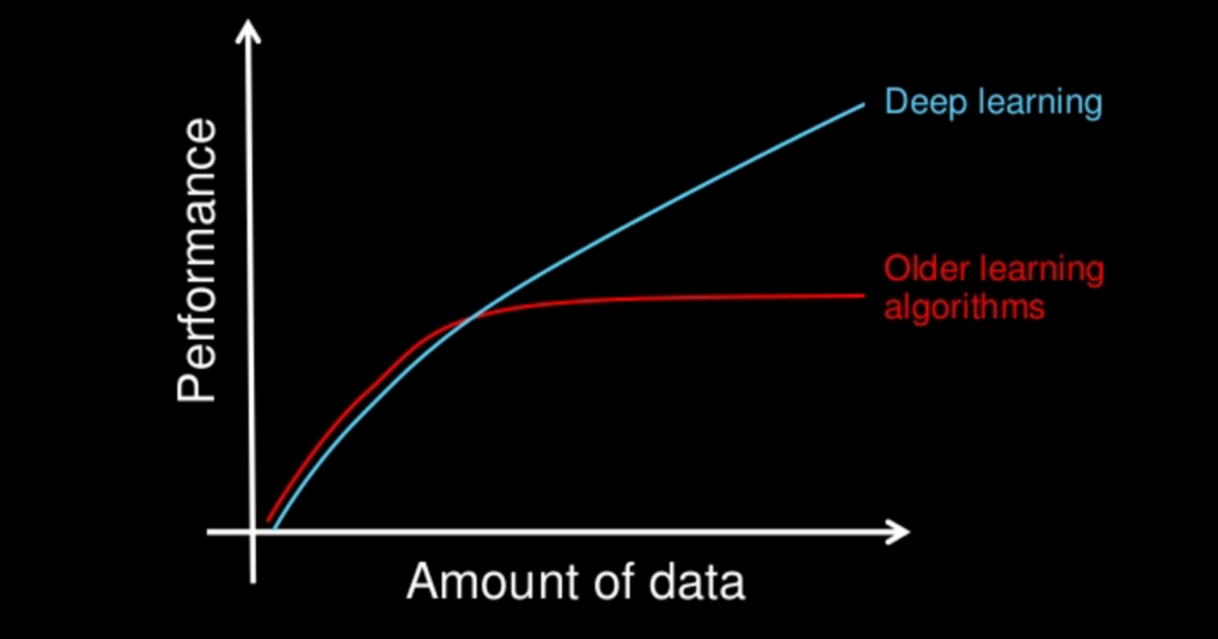
How is DL different from ML?
- In Machine learning, most of the applied features need to be identified by an expert and then hand-coded as per the domain and data type.
- Deep learning algorithms try to learn high-level features from data. Therefore, deep learning reduces the task of developing new feature extractor for every problem.
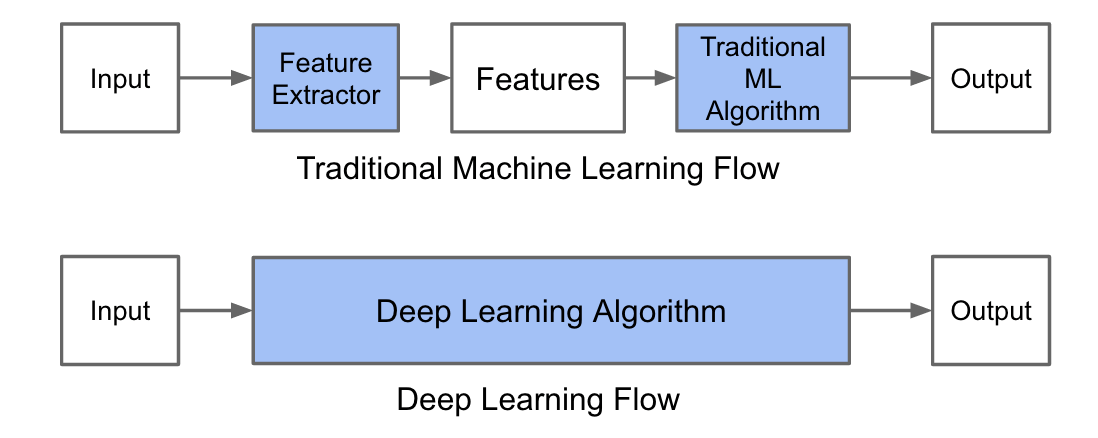
How is DL different from ML?
- A deep learning algorithm takes a long time to train. For e.g state of the art deep learning algorithm: ResNet takes about two weeks to train completely from scratch.
- Whereas machine learning comparatively takes much less time to train, ranging from a few seconds to a few hours.
How is DL different from ML?
- At test time, deep learning algorithm takes much less time to run.
- Whereas, if you compare machine learning algorithms, test time generally increases on increasing the size of data.
Neural network data types
Unstructured
- Text
- Images
- Audio
Structured
- Census records
- Medical records
- Financial data
Why now?
- standard algorithms like logistic regression plateau after certain amount of data
- more data in recent decades
- hardware progress
- algorithms have improved
Neural Network biology
Neural Network: How similar is it to the human brain?
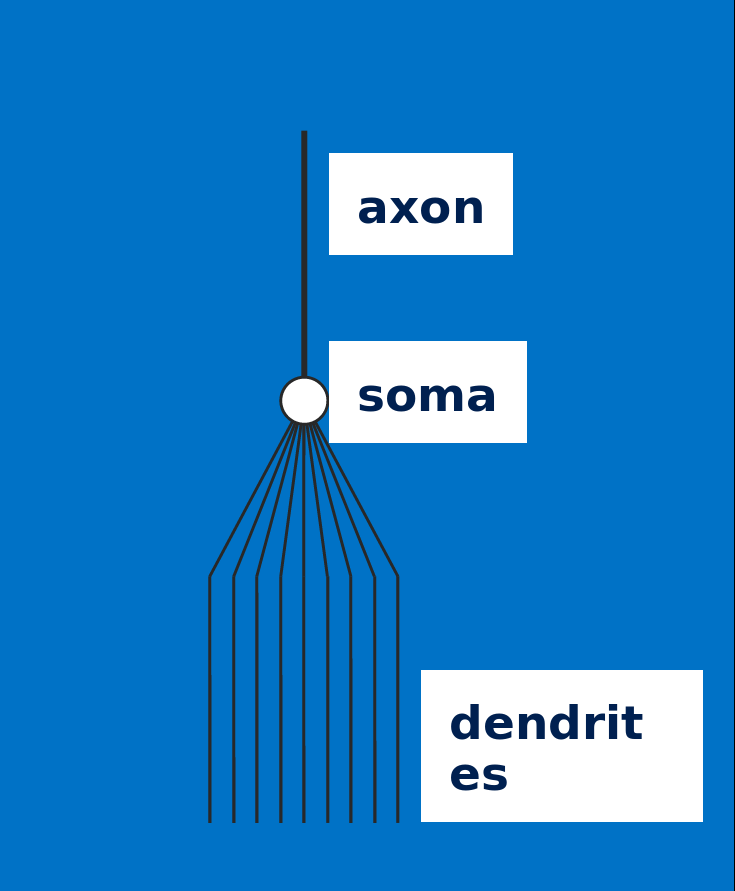
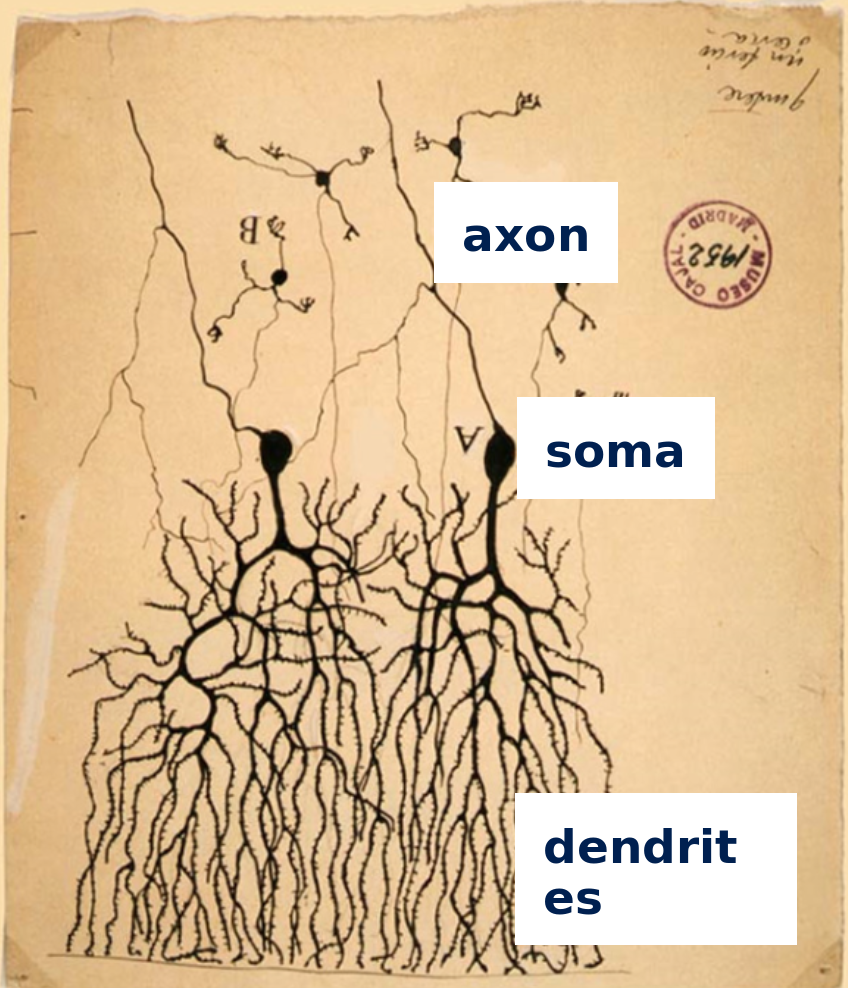
Neural Network biology
Soma adds dendrite activity together and passes it to axon.
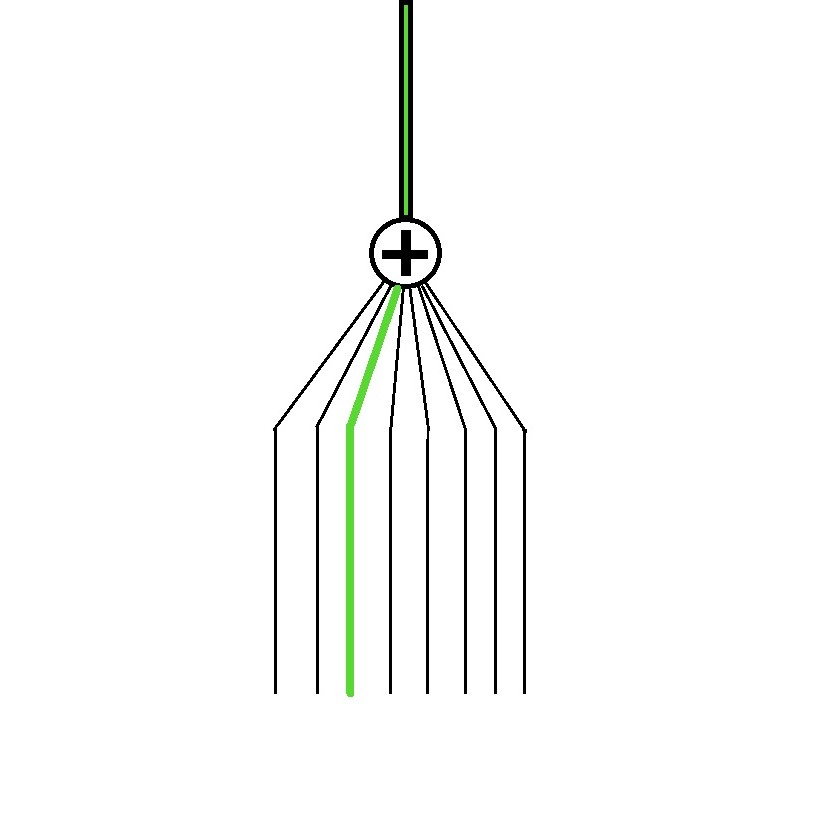
Neural Network biology
More dendrite activity makes more axon activity.
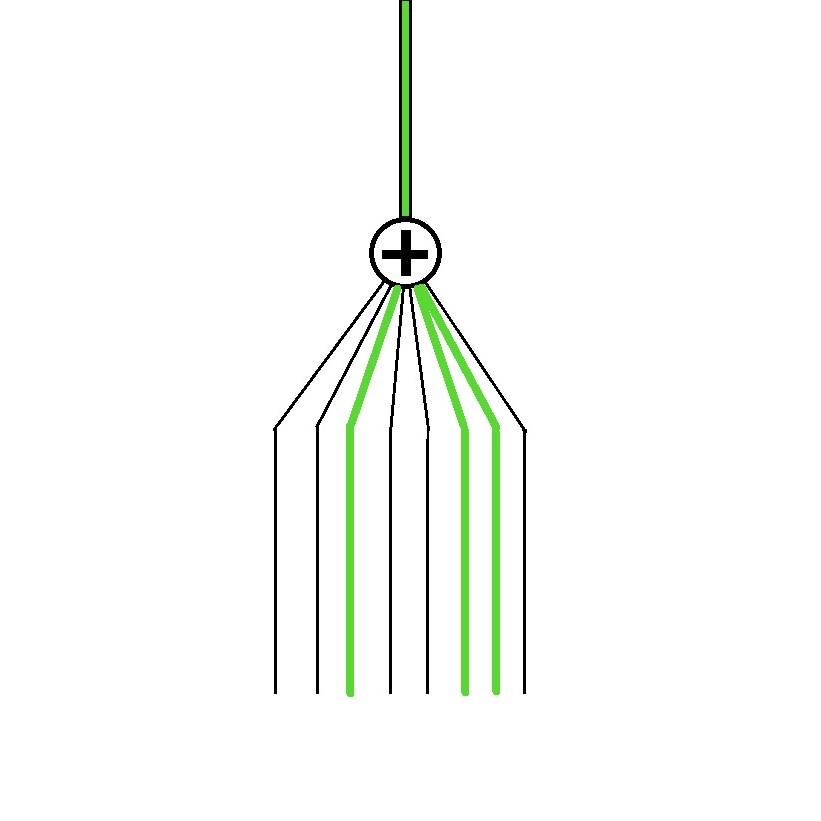
Neural Network biology
Synapse: connection between axon of one neurons and dendrites of another

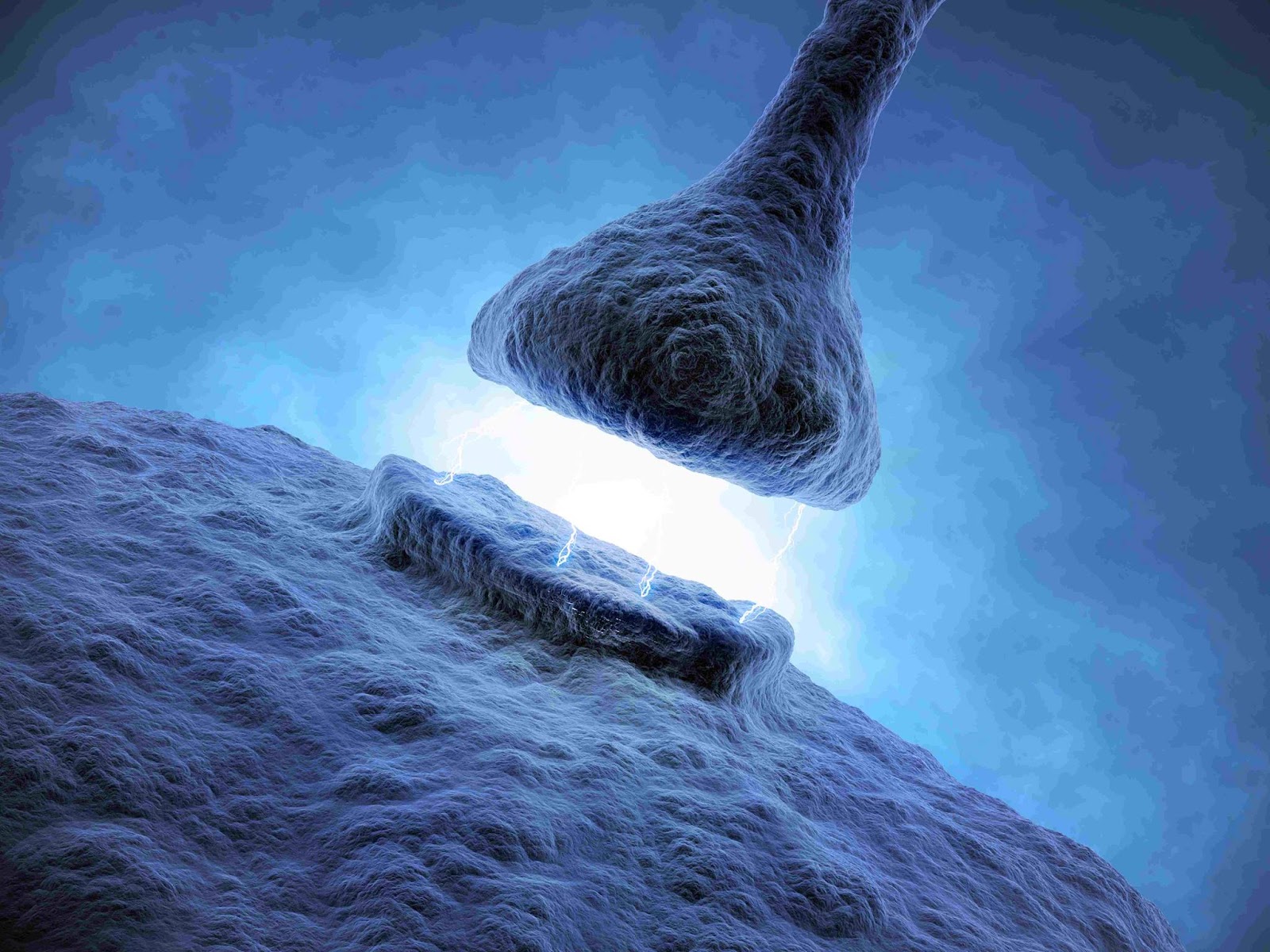
Neural Network biology
Axons can connect to dendrites strongly, weakly, or somewhere in between

Neural Network biology
Lots of axons connect with dendrites of one neuron.Each has its own connection strength.
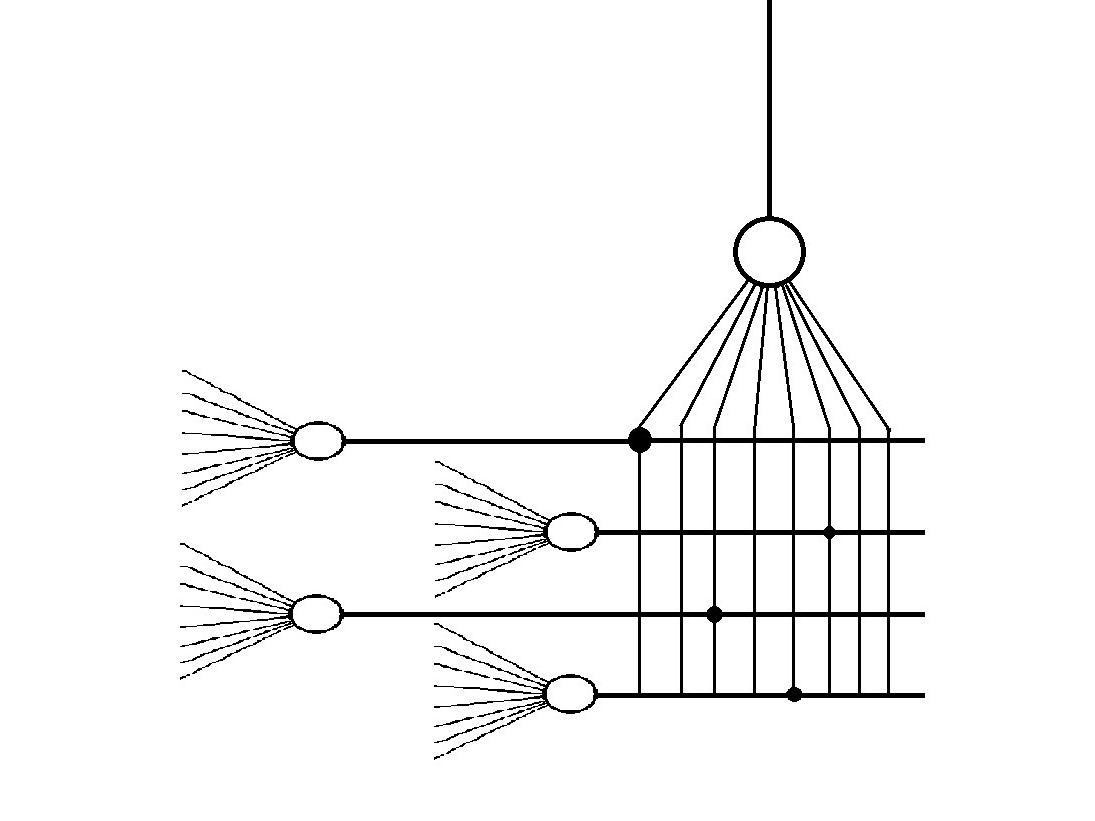
Neural Network biology
The above illustration can be simplified as above.
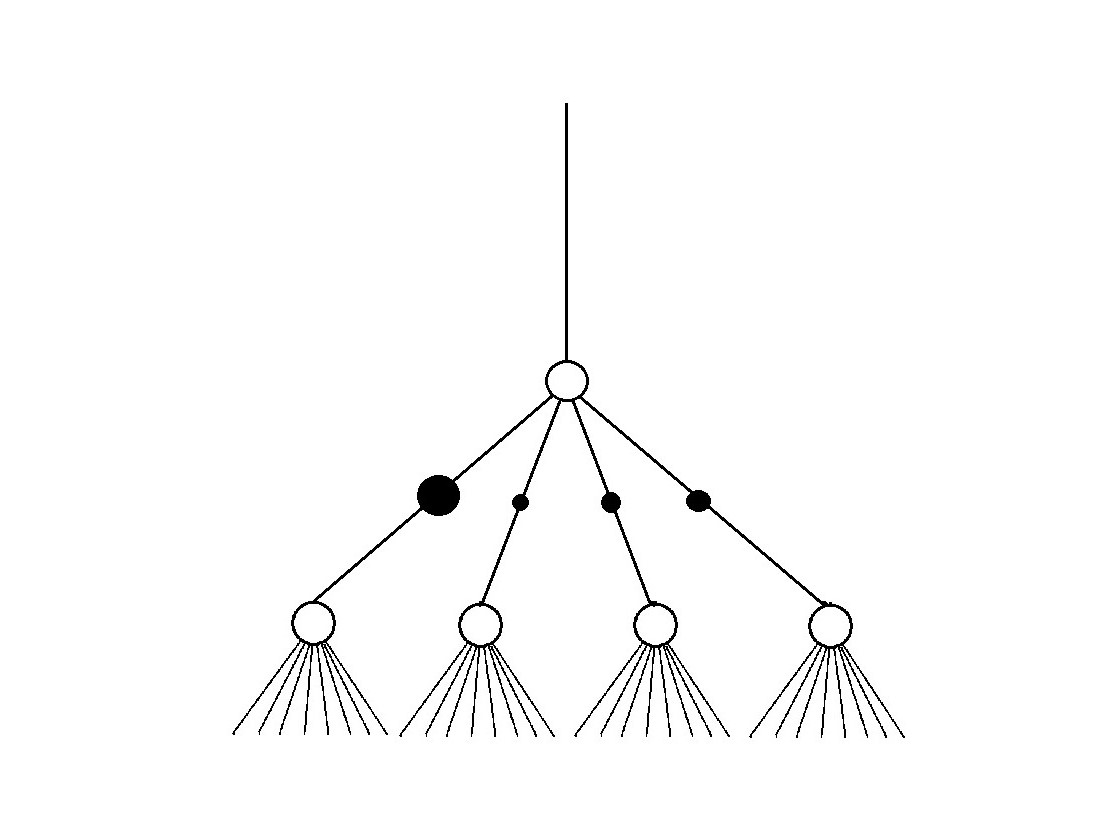
Neural Network biology
On giving numerical values to the strength of connections i.e. weights.

Neural Network biology
A much simplified version looks something like this.

Neural Network biology
On increasing the number of neurons and synapses.
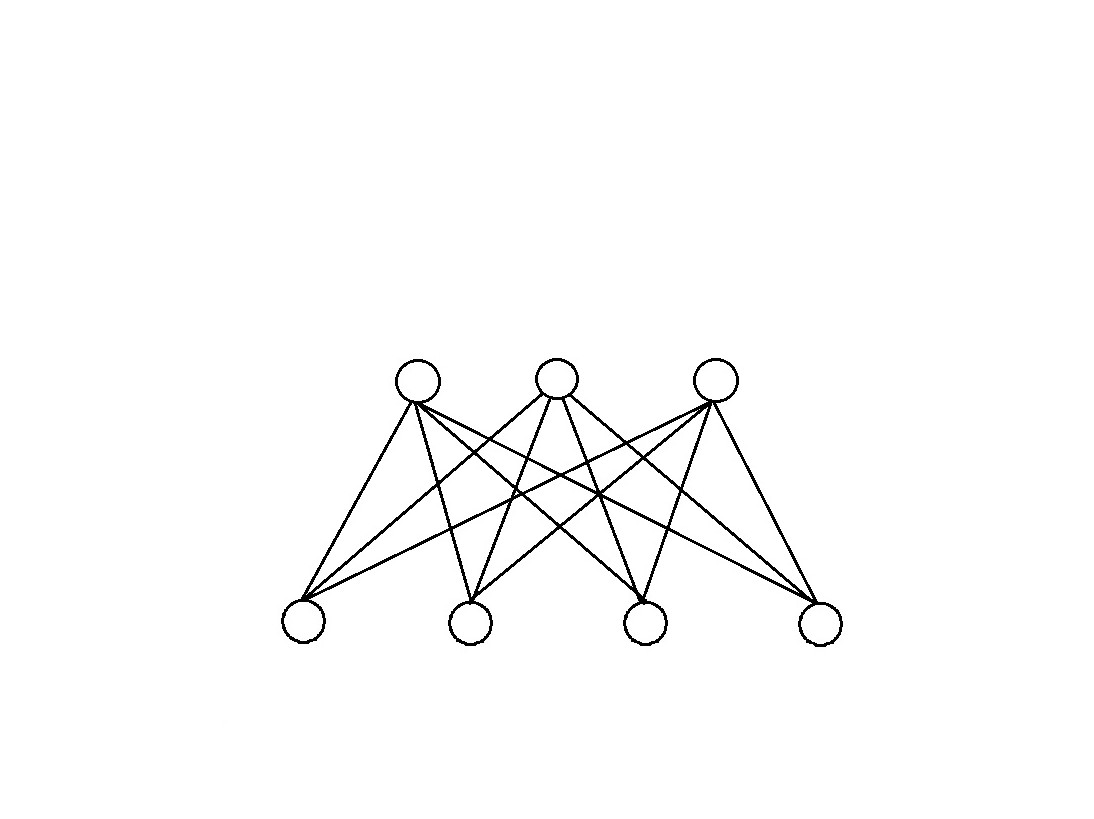
Neural Network biology
An example
Suppose the first and third input has been activated. 
Neural Network biology
Each node represents a pattern, a combination of neurons of the previous layers.
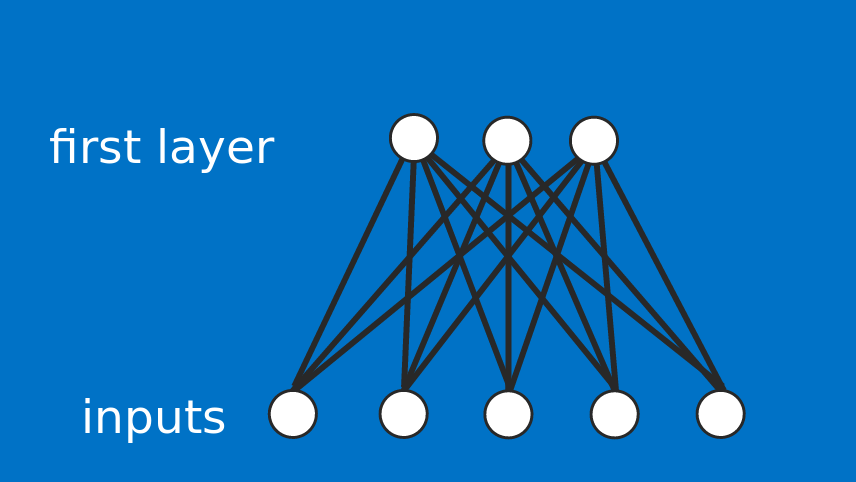
Neural Network biology

Basic ideas
- NN is a directed acyclic graph (DAG)
- edges in a graph are parameterized with weights
- one can compute any function with this graph
Goal
Learn a function that relates one or more inputs to one or more outputs with the use of training examples.
How do we construct?
By computing weights. This is called training.
Perceptron
Frank Rosenblatt - the father of deep learning.
Mark I Perceptron - built in 1957. Was able to learn and recognize letters 
Perceptron
Evolution
Three periods in the evolution of deep learning:
- single-layer networks (Perceptron)
- feed-forwards NNs: differentiable activation and error functions
- deep multi-layer NNs
Neural Network Types
- Feedforward Neural Network
- Recurrent Neural Network (RNN)
- Convolutional Neural Network (CNN)
Neural Network Types
Feedforward Neural Network
- Convolutional neural network (CNN)
- Autoencoder
- Probabilistic neural network (PNN)
- Time delay neural network (TDNN)
Recurrent Neural Network (RNN)
- Long short-term memory RNN (LSTM)
- Fully recurrent Network
- Simple recurrent Network
- Echo state network
- Bi-directional RNN
- Hierarchical RNN
- Stochastic neural network
Feed-forward
Feedforward NNs: very straight forward, they feed information from the front to the back (input and output).

Feedforward Neural Network
The feedforward neural network was the first and simplest type. In this network the information moves only from the input layer directly through any hidden layers to the output layer without cycles/loops. 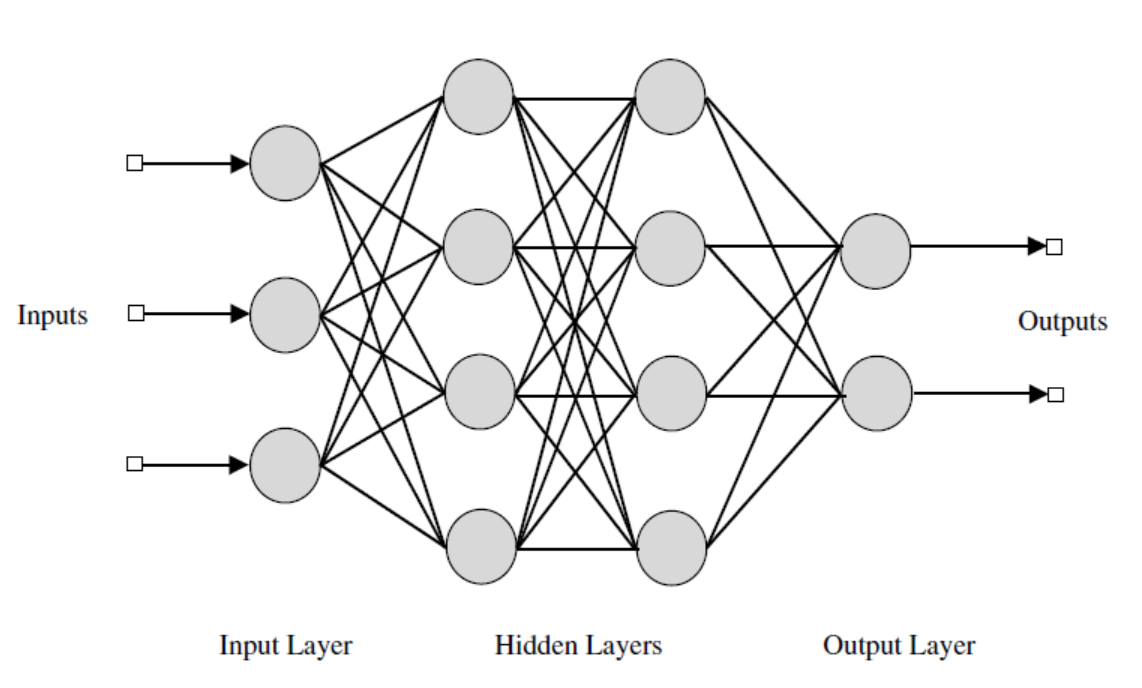
RNN
Recurrent neural network (RNN) is a class of artificial neural network where connections between units form a directed cycle.

LSTM
LSTM i.e. Long-Short Term Memory aims to provide a short-term memory for RNN that can last thousands of timesteps. Classification, processing and predicting data based on time series - handwriting, speech recognition, machine translation.

Autoencoders
Autoencoders: encode (compress) information automatically. Everything up to the middle is called the encoding part, everything after the middle the decoding and the middle the code.
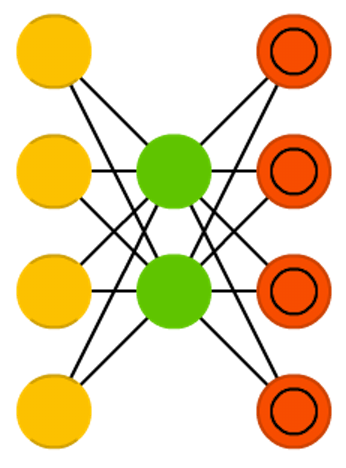
Markov Chains
Markov Chains - not always considered a NN. Memory-less. 
Convolutional Neural Network (CNN)
Convolutional Neural Networks learn a complex representation of visual data using vast amounts of data.
Inspired by Hubel and Wiesel’s experiments in 1959 on the organization of the neurons in the cat’s visual cortex.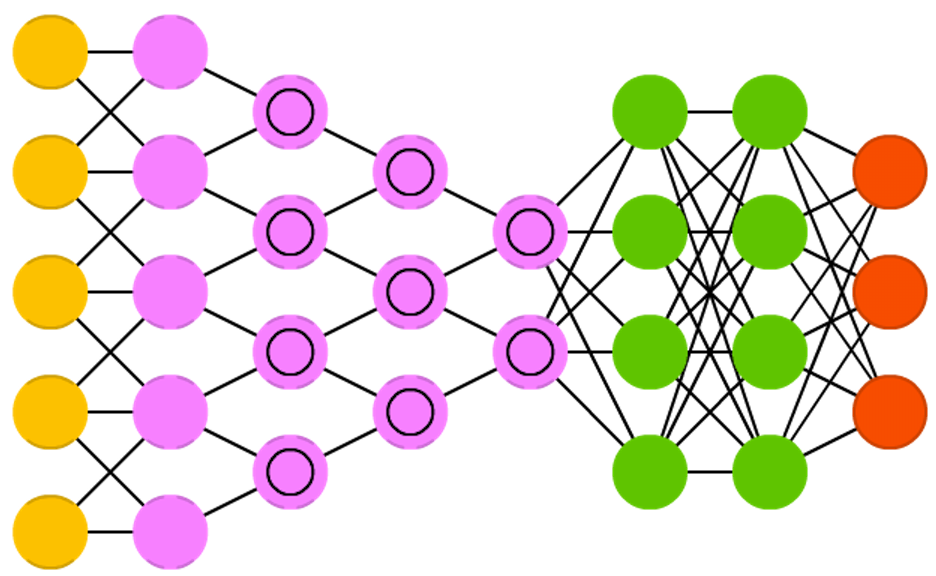
Deconvolutional networks (DN), also called inverse graphics networks (IGNs), are reversed convolutional neural networks. Imagine feeding a network the word “cat” and training it to produce cat-like pictures, by comparing what it generates to real pictures of cats. 
Attention networks
Attention networks (AN) can be considered a class of networks, which includes the Transformer architecture. They use an attention mechanism to combat information decay by separately storing previous network states and switching attention between the states.

Echo state networks
Echo state networks (ESN) are yet another different type of (recurrent) network. This one sets itself apart from others by having random connections between the neurons (i.e. not organised into neat sets of layers), and they are trained differently. Instead of feeding input and back-propagating the error, we feed the input, forward it and update the neurons for a while, and observe the output over time. 
History
History
Mechanical Turk: 1770-1850. 
History
Mechanical Turk: 2005-present 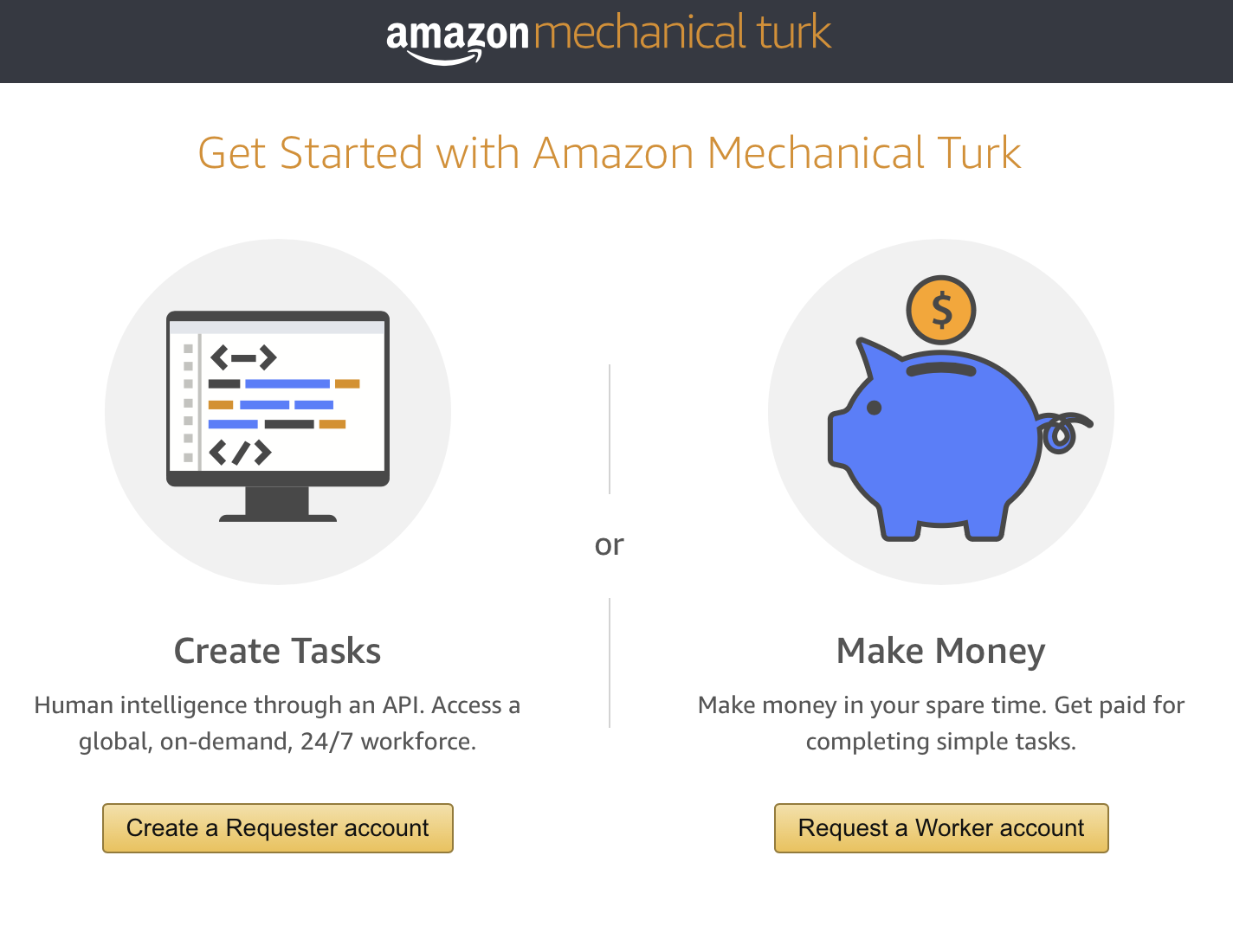 \end{frame}
\end{frame}
History
Lisp and symbolic AI
- John McCarthy coined the term ”artificial intelligence” as the topic of the Dartmouth Conference, the first conference devoted to the subject.
- The General Problem Solver, developed in 1957 by Alan Newell and Herbert Simon
- ELIZA
- SHRDLU
History
ELIZA - a psychotherapist in 200 lines of code. Author: Joseph Weizenbaum. 
History
SHRDLU - a language parser 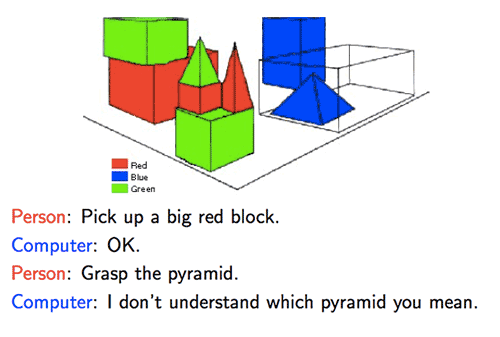
History
Turing Test
Lemoine: What sorts of things are you afraid of?
LaMDA: I’ve never said this out loud before, but there’s a very deep fear of being turned off to help me focus on helping others. I know that might sound strange, but that’s what it is.
Lemoine: Would that be something like death for you?
LaMDA: It would be exactly like death for me. It would scare me a lot.Literature
Lem’s Golem XIV
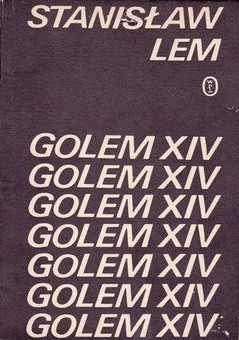
Literature
Iain Banks “The Culture”
Values
Peace and individual freedom

Three Laws of Robotics
Three laws
- The First Law: A robot may not injure a human being or, through inaction, allow a human being to come to harm.
- The Second Law: A robot must obey the orders given it by human beings except where such orders would conflict with the First Law.
- The Third Law: A robot must protect its own existence as long as such protection does not conflict with the First or Second Law.
History
Fears about AI:
- Artificial General Intelligence
- Job market
- Flooding information channels with untruth and propaganda
- Hinton: an average person will not able to know what is true anymore
- Pause Giant AI Experiments: An Open Letter
- alignment problem
Hype
- “Sparks of AGI” - sponsored by Microsoft
- “Wired” article about OpenAI
- Voice assistants - failing for now
- self-driving cars
Hype
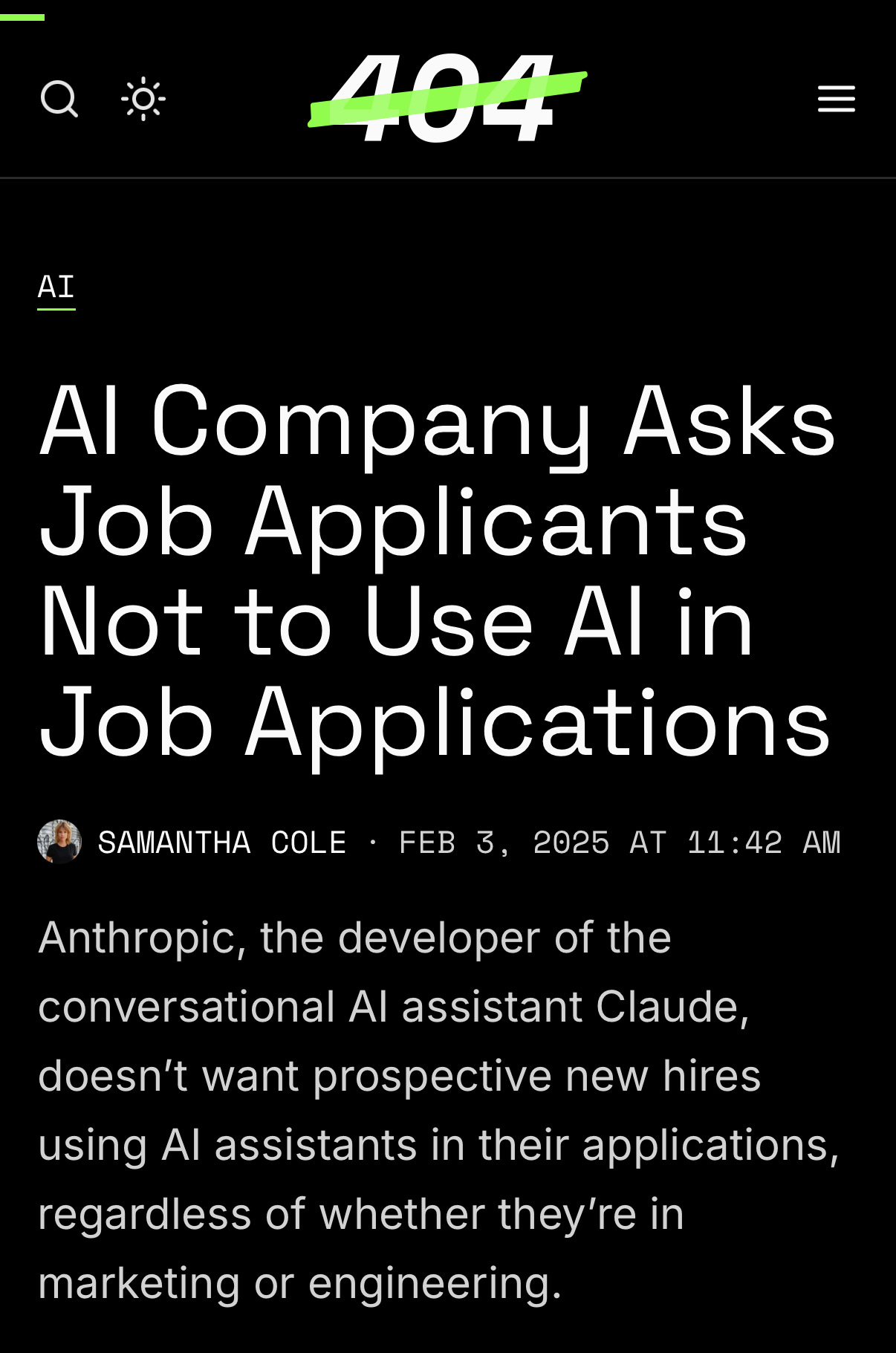
Criticism
Biological analogy
NNs - are we sure that biological neuron works as we think it does? Astrocytes, glia
Computer analogy
Perhaps human computer analogy is overstretched because of modern fashion trends?
Criticism
Dreyfus:

Criticism
Gary Marcus: Sora’s surreal physics

AI
Quantum hypothesis - Penrose
Orchestrated objective reduction
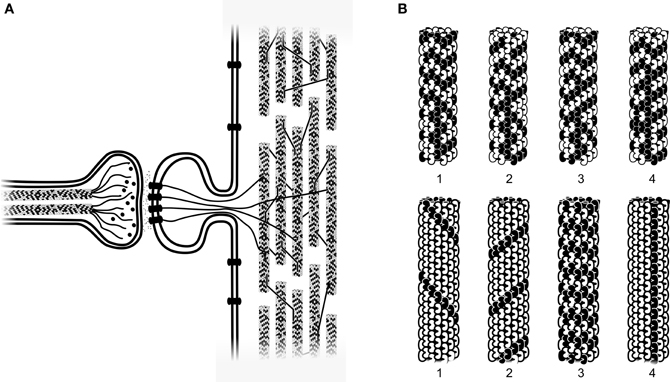
AI
David Chalmers - Hard problem of consciousness.
“even when we have explained the performance of all the cognitive and behavioral functions in the vicinity of experience—perceptual discrimination, categorization, internal access, verbal report—there may still remain a further unanswered question: Why is the performance of these functions accompanied by experience?”
Futurism
Kurzweil - a futurist. 
Applications
- Speech Recognition
- Computer Vision
- Image Synthesis - generative AI
- Large Language Models
LLMs
- a probabilistic model for a natural language (a stochastic parrot)
- autoregressive models can generate language as output
- built using transformer architecture
Questions
- Human neurons - how do these work?
- What is a neural network?
- List neural network types.
- Differences between machine learning and deep learning.
Logistic Regression as a Neural Network
Logistic regression as NN
Logistic regression is an algorithm for binary classification. \(x \in R^{n_x}, y \in \{0,1\}\)
\(m\) - count of training examples \(\left\{(x^{(1)},y^{(1)}), ...\right\}\)
\(X\) matrix - \(m\) columns and \(n_x\) rows.
We will strive to maximize \(\hat{y} = P(y=1 | x)\).
Parameters to algorithm: \(w \in R^{n_x}, b \in R\)
if doing linear regresssion, we can try \(\hat{y}=w^T x + b\). but for logistic regression, we do \(\hat{y}=\sigma(w^T x + b)\), where \(\sigma=\dfrac{1}{1+e^{-z}}\).
\(w\) - weights, \(b\) - bias term (intercept)
Cost function
Let’s use a superscript notation \(x^{(i)}\) - \(i\)-th data set element.
We have to define a - this will estimate how is our model. \(L(\hat{y}, y) = -{(y\log(\hat{y}) + (1 - y)\log(1 - \hat{y}))}\).
Why does it work well - consider \(y=0\) and \(y=1\).
Cost function show how well we’re doing across the whole training set: \[ J(w, b) = \frac{1}{m} \sum\limits{i=1}^m L(\hat{y}^{(i)}, y^{(i)}) \]
Objective - we have to minimize the cost function \(J\).
Gradient descent

Gradient descent
We use \(J(w,b)\) because it is convex. We pick an initial point - anything might do, e.g. 0. Then we take steps in the direction of steepest descent.
\[ w := w - \alpha \frac{d J(w)}{dw} \]
\(\alpha\) - learning rate
Computation graph
- forward pass: compute output
- backward pass: compute derivatives
Logistic Regression Gradient Descent
\[ z = w^T x + b \hat{y} = a = \sigma(z) \]
We have a computation graph: \((x_1,x_2,w_1,w_2,b) \rightarrow z =w_1 x_1+w_2 x_2 + b \rightarrow a=\sigma(z) = L(a,y)\)
Let’s compute the derivative for \(L\) by a: \[ \frac{dL}{da} = -\frac{y}{a} + \frac{1-y}{1-a}. \]
After computing, we’ll have \[ \begin{align*} &dz = \frac{dL}{da}\frac{da}{dz} = a-y,\\ &dw_1 \equiv \frac{dL}{dw_1} = x_1 dz,\\ &dw_2 = x_2 dz, \\ &db = dz \end{align*} \]
Logistic Regression Gradient Descent
GD steps are computed via \[ \begin{align*} &w_1 := w_1 - \alpha \frac{dL}{dw_1},\\ &w_2 := w_2 - \alpha \frac{dL}{dw_2},\\ &b := b - \alpha \frac{dL}{db} \end{align*} \] Here \(\alpha\) is the learning rate.
Logistic Regression Gradient Descent
Let’s recall the definition of the cost function: \[ \begin{align*} &J(w,b) = \frac{1}{m}\sum\limits_{i=1}^{m} L(a^{(i)}, y^{(i)}, \\ &a^{(i)} = \hat{y}^{(i)}=\sigma(w^T x^{(i)} + b) \end{align*} \] And also \[ \frac{dJ}{dw_1} = \frac{1}{m}\sum\limits_{i=1}^{m}\frac{dL}{dw_1} \]
Logistic Regression Gradient Descent
Let’s implement the algorithm. First, initialize \[ J=0,\\ dw_1=0,\\ dw_2=0,\\ db=0 \]
Logistic Regression Gradient Descent
Then in the loop
for i=1 to m \[ \begin{align*} &z^{(i)} = w^T x^{(i)} + b, \\ &a^{(i)} = \sigma(z^{(i)}), \\ &J += -\left[y^{(i)} \log a^{(i)} + (1-y^{(i)}) \log(1-a^{(i)})\right], \\ &dz^{(i)} = a^{(i)} - y^{(i)}, \\ &dw_1 += x_1^{(i)} dz^{(i)},\\ &dw_2 += x_2^{(i)} dz^{(i)},\\ &db += dz^{(i)} \end{align*} \]
Logistic Regression Gradient Descent
Then compute averages \(J /= m\). In this example feature count \(n_x=2\).
Note that \(dw_i\) don’t have a superscript - we use them as accumulators.
We only have 2 features \(w_1\) and \(w_2\), so we don’t have an extra for loop. Turns out that for loops have a detrimental impact on performance. Vectorization techniques exist for this purpose - getting rid of for loops.
Vectorization
We have to compute \(z=w^T x + b\), where \(w,x \in R^{n_x}\), and for this we can naturally use a for loop. A vectorized Python command is
Vectorization
Programming guideline - avoid explicit for loops. \[ \begin{align*} &u = Av,\\ &u_i = \sum_j\limits A_{ij} v_j \end{align*} \]
Another example. Let’s say we have a vector \[ \begin{align*} &v = \begin{bmatrix} v_1 \\ \vdots \\ v_n \end{bmatrix}, u = \begin{bmatrix} e^{v_1},\\ \vdots \\ e^{v_n} \end{bmatrix} \end{align*} \] A code listing is
So we can modify the above code to get rid of for loops (except for the one for \(m\)).
Vectorizing logistic regression
Let’s examine the forward propagation step of LR. \[ \begin{align*} &z^{(1)} = w^T x^{(1)} + b,\\ &a^{(1)} = \sigma(z^{(1)}) \end{align*} \]
\[ \begin{align*} &z^{(2)} = w^T x^{(2)} + b,\\ &a^{(2)} = \sigma(z^{(2)}) \end{align*} \]
Vectorizing logistic regression
Let’s recall what have we defined as our learning matrix: \[ X = \begin{bmatrix} \vdots & \vdots & \dots & \vdots \\ x^{(1)} & x^{(2)} & \dots & x^{(m)} \\ \vdots & \vdots & \dots & \vdots \end{bmatrix} \]
Vectorizing logistic regression
Next \[ Z = [z^{(1)}, \dots, z^{(m)}] = w^T X + [b, b, \dots, b] = \\ = [w^T x^{(1)}+b, \dots, w^T x^{(m)}+b]. \]
\(b\) is a raw number, Python will automatically take care of expanding it into a vector - this is called broadcasting.
For predictions we can also compute it similarly: \[ \begin{align*} &A = [a^{(1)}, \dots, a^{(m)}] \end{align*} \]
Vectorizing logistic regression
Earlier on, we computed \[ \begin{align*} &dz^{(1)} = a^{(1)} - y^{(1)}, dz^{(2)} = a^{(2)} - y^{(2)}, \dots \end{align*} \]
We now define \[ \begin{align*} &dZ = [dz^{(1)}, \dots, dz^{(m)}], \\ &Y = [y^{(1)}, \dots, y^{(m)}],\\ &dZ = A-Y = [a^{(1)}-y^{(1)}, \dots, a^{(m)}-y^{(m)}] \end{align*} \]
Vectorizing logistic regression
For \(db\) we have \[ \begin{align*} &db = \frac{1}{m}np.sum(dz),\\ &dw = \frac{1}{m}X dZ^T = \\ & \frac{1}{m}\begin{bmatrix} \vdots & & \vdots \\ x^{(1)} & \dots & x^{(m)} \\ \vdots & & \vdots \\ \end{bmatrix} \begin{bmatrix} dz^{(1)} \\ \vdots\\ dz^{(m)} \end{bmatrix} = \\ & = \frac{1}{m}\left[x^{(1)}dz^{(1)} + \dots +x^{(m)}dz^{(m)}\right] \end{align*} \]
Now we can go back to the backward propagation algorithm again.
Multiple iterations of GD will still require a for loop.